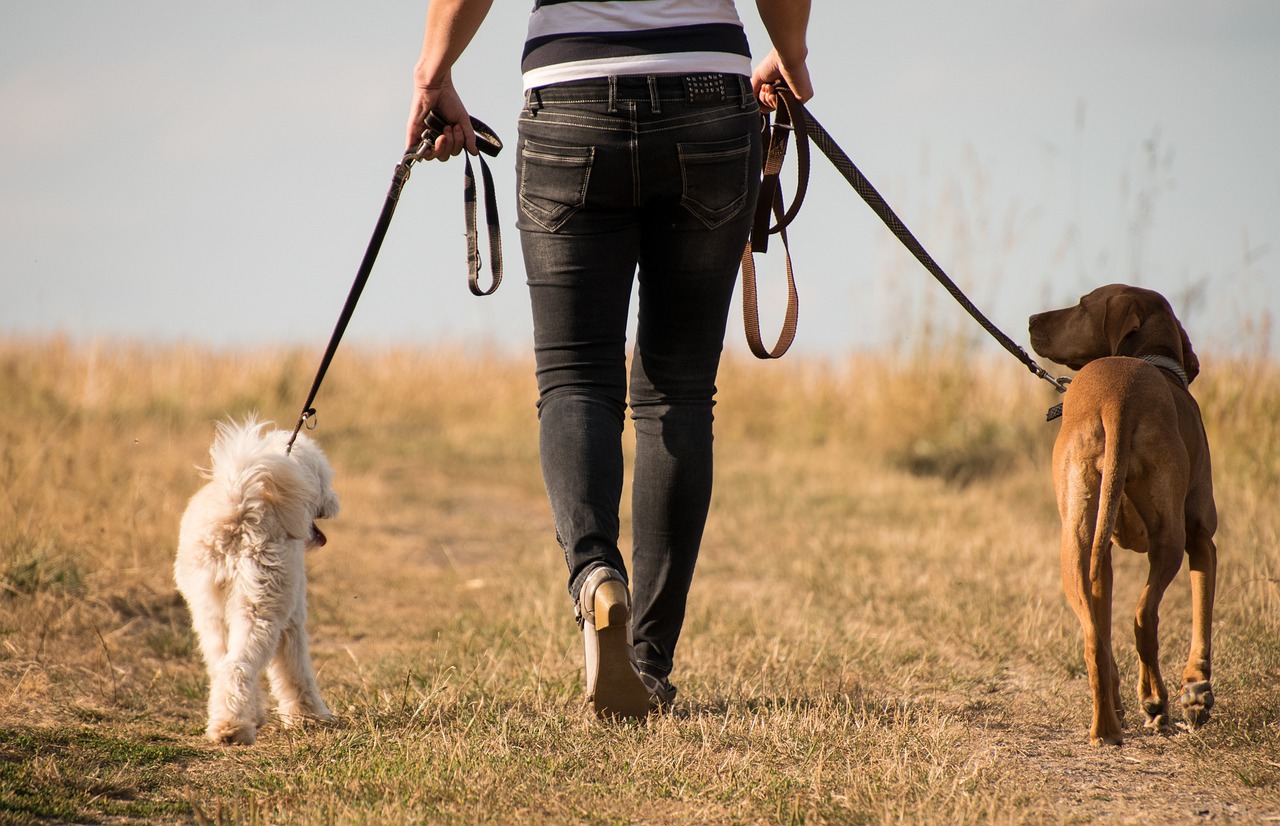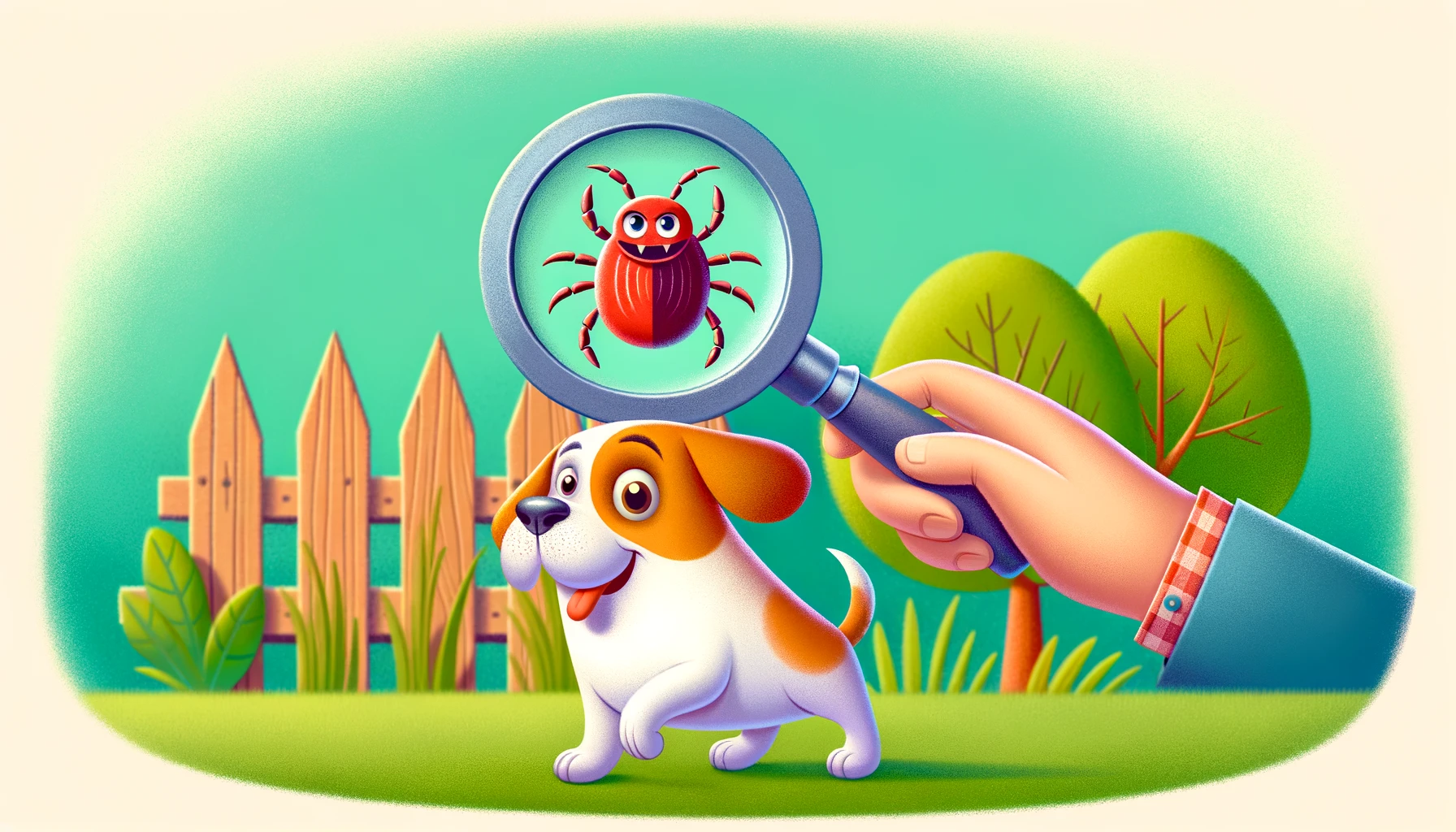Oh, the joys of dog ownership. You’ve got a furry, four-legged best friend who, let’s face it, probably listens to you more than any of your two-legged friends. And now, you’ve decided to take on the noble quest of teaching Fido to walk on a leash. Because, apparently, taking a dog for a “walk” means the dog actually has to be on a leash and not just sniffing every bush or chasing after squirrels. Groundbreaking, right?
1. Choose a leash that screams “stylish but practical”.
Let’s start with the basics. You need a leash. Not just any leash, but one that is sturdy, comfortable, and possibly in a hue that complements your dog’s gorgeous fur coat. If it doesn’t get you at least one compliment during your walk, you’re doing it wrong. But remember, the leash should also be functional. A diamond-studded leash might look fabulous, but it’s not the best choice if you’re trying to control a 100-pound Great Dane.
2. The Magical Harness – Because Fashion and Functionality Collide.
Gone are the days when dogs just wore simple collars. Now we have harnesses! If you’ve ever tried putting one of these contraptions on a dog for the first time, you’ll understand the struggle. It’s a bit like trying to solve a Rubik’s Cube while blindfolded. Once you’ve deciphered this canine puzzle, you’ll find that a harness can distribute pressure evenly when your dog pulls, reducing the risk of injury. Plus, it gives you more control, which is a win-win. And honestly, they make dogs look like they’re ready for an adventure. So, cute AND practical.
3. Treats: The Ultimate Bribery Tool.
You know how you can be persuaded to do pretty much anything for your favorite snack? Well, guess what? Dogs are no different. Find out what turns your pooch into a drooling mess (hint: it’s probably any food you’re holding) and keep it on hand. These are your secret weapon. Every time your dog walks nicely beside you, bam! Treat time. They pull on the leash? No treat. It’s a simple economy based on deliciousness.
4. Walk this way! Or that way! Or any way but the squirrel’s way!
It’s your job to decide the direction and pace of the walk. Start by keeping the leash short (but not tight). This way, you prevent your pooch from thinking he’s auditioning for “Fast & Furious: Canine Drift”. If he tries to drag you to the nearest fire hydrant or another dog, stand still, wait for him to calm down, and then proceed in the direction YOU want to go. Yes, YOU are in charge. Believe it or not!
5. Consistency is Key. Even if it Feels Like Groundhog Day.
Training takes time. And patience. And probably a few lost battles with a squirrel. But if you’re consistent in your training, eventually your dog will understand what you expect from him. Keep at it, and don’t get discouraged if progress is slower than you’d like. Remember, Rome wasn’t built in a day, and neither are well-behaved leash-walking dogs.
6. Celebrate Tiny Victories: The Doggo Dance Party.
Now, we all know every small win in life is worth celebrating. Your dog managed to walk two feet without acting like he’s reenacting a scene from a wild jungle chase? That’s dance party material right there! A little booty shake or a vocal “good boy/girl” will not only make you feel good but will also make your dog feel like the star they truly are. Because who doesn’t like a bit of positive reinforcement? (If you answered “no one,” you’re correct.)
7. Distractions: The Eternal Nemesis.
Oh, look, a butterfly! A bird! A leaf blowing in the wind! It’s amazing what can distract a dog. You might think you’re just out for a leisurely stroll, but to your dog, it’s a smorgasbord of sights, sounds, and smells. Keep those treats handy and practice the “look” or “watch me” command. This way, when Mr. Squirrel decides to put on a show, you can quickly redirect your dog’s attention back to the task at hand – which, in case they forgot, is walking politely next to you.
8. Embrace Your Inner Zen: Stay Calm and Walk On.
If you’re getting frustrated, guess what? Your dog can sense it. And the more tense you are, the more anxious they become. So if you ever find yourself in a leash-pulling tug-of-war, take a deep breath, channel your inner Zen master, and remember: It’s just a walk. In the grand scheme of things, it’s a blip. So relax, enjoy the moment, and keep moving forward.
9. Remember, It’s Not a Sprint; It’s a Marathon (Or Maybe Just a 5k).
Training your dog to be the perfect leash-walker won’t happen overnight. Heck, it might not even happen over a fortnight. But each walk gets you one step closer to your goal. So even if you’re moving at a snail’s pace (literally), celebrate the progress and remember that every champion was once a beginner.
10. Lastly, Enjoy the Journey (Cliché, But True).
Let’s face it; walks aren’t just about discipline and training. They’re a time to bond with your four-legged friend, enjoy the outdoors, and maybe even sneak in a little exercise. So don’t get so wrapped up in perfection that you forget to enjoy the journey. Laugh at the missteps, cherish the moments of connection, and remember: At the end of the day, your dog loves you, leash or no leash.
Now, go out there, and may the leash force be with you!
Pro Tips for the Aspiring Dog Whisperer:
- Early Bird Gets the Worm: Start training when your dog is a puppy if you can. Younger dogs are often more receptive to learning, and it’s easier to instill good habits early on. If you have an older dog, don’t despair! It’s never too late to teach an old dog new tricks; it just might require a bit more patience.
- A Tired Dog is a Good Dog: A well-exercised dog is often more focused and less likely to be distracted. Consider playing fetch or letting your dog run in the yard before starting your leash training session. You may also read: How Much Exercise Does Your Dog Need?
- Two’s Company: Consider walking with a friend who has a well-behaved dog. Your pup may just take cues from their more disciplined furry counterpart.
- Avoid Overwhelm: Start in a quiet environment with minimal distractions. As your dog becomes more comfortable and behaves better, gradually introduce more challenging environments like busier streets or parks.
- Gear Matters: Invest in a good quality, adjustable leash. Retractable leashes might seem convenient, but they can make training more difficult since they give less control.
- Speak Doggo: Understand your dog’s body language. If they look scared or overwhelmed, it might be a good idea to take a break or move to a quieter location.
- Safety First: Always ensure your dog’s collar or harness fits well. You don’t want them wriggling out in the middle of a busy intersection.
- Short and Sweet: Keep training sessions short, especially in the beginning. It’s better to have multiple brief and positive sessions than one long and frustrating one.
- Patience Over Perfection: There will be days when it feels like you’re moving backward instead of forward. It’s okay. Deep breaths. Tomorrow is another day.
- Seek Expertise: If you’re struggling, consider enrolling in a leash-training class or hiring a professional dog trainer. Sometimes, an outsider’s perspective can work wonders!
Remember, every dog and owner duo is unique. What works for one might not work for another. Stay flexible, stay patient, and most importantly, stay consistent.
Frequently Asked Questions (FAQ) about Leash Training Your Dog
The duration varies depending on the dog’s age, temperament, previous experiences, and your consistency. While some dogs might get the hang of it within a few days, others may take weeks or even months. Remember, patience and consistency are key.
Ah, the age-old game of “tug.” Redirect the behavior by using toys specifically designed for tugging. You can also use a bitter-tasting spray (available at pet stores) on the leash as a deterrent.
The saying, “You can’t teach an old dog new tricks,” is a myth! Older dogs can certainly learn; it might just take a bit more time and patience.
Start by making the leash a positive item. Lay it near their food bowl or play area without attempting to put it on them. Over time, they’ll associate it with good things. Slowly introduce them to wearing it without any pressure to walk.
Use a harness that redirects them when they pull, making it difficult for them to continue the behavior. Combine this with the stop-and-wait method. When they pull, stop walking until they come back to you or the leash slackens.
Daily sessions are ideal, but keep them short. Multiple 10-15 minute sessions can be more effective than a single long one.
This could be due to fear, over-excitement, or territorial behavior. It’s essential to pinpoint the cause. In cases of high aggression or reactivity, consulting a professional dog trainer is recommended.
While retractable leashes give dogs more freedom, they offer less control for the owner. It’s best to start with a standard fixed-length leash for training and only consider retractable ones once your dog is well-behaved.
High-value treats can be your best friend here. Use them to reward attention and good behavior. Over time, as the behavior becomes ingrained, you can reduce the frequency of treats.
Not always. While treats are great for initial training, you want to aim for verbal praise or petting as rewards in the long run. This ensures your dog isn’t behaving well just for the treat.



